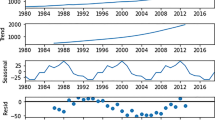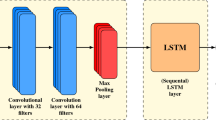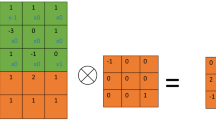Abstract
The forecasting technique of metals futures prices is helpful to realize the early warning for exporter and importer countries, market traders and government regulation. In order to optimize the accuracy of metal futures prices prediction, this paper establishes a novel hybrid model, which combines signal decomposition theory, stochastic theory and deep learning methods. The primary modelling process of the proposed model involves three main steps. In step I, the proposed decomposition method is employed to preprocess the raw metal futures data. The time strength weight algorithm based on the long-term memory model is trained for each subseries in step II. In step III, the final forecasting results are obtained by inverse transform after the stochastic deep learning model for each sub-series is constructed by preprocessing and training. The proposed model exhibits superior performance in metal futures forecasting by analyzing the results with multiplied practices and an original error evaluation approach called multi-scale Jensen-Shannon divergence. It can get higher forecasting accuracy than the corresponding single models and the existing hybrid models.












Similar content being viewed by others
References
Aye G et al (2015) Forecasting the price of gold using dynamic model averaging. Int Rev Financ Anal 41:257–266
Liu C et al (2017) Forecasting copper prices by decision tree learning. Resources Policy 52:427–434
Drachal K (2019) Forecasting prices of selected metals with Bayesian data-rich models. Resources Policy 64:101528
Balcilar M, Hammoudeh S, Asaba NAF (2015) A regime-dependent assessment of the information transmission dynamics between oil prices, precious metal prices and exchange rates. Int Rev Econ Financ 40:72–89
He K, Chen Y, Tso GKF (2017) Price forecasting in the precious metal market: A multivariate EMD denoising approach. Resources Policy 54:9–24
Dooley G, Lenihan H (2005) An assessment of time series methods in metal price forecasting. Resources Policy 30(3):208–217
Han X, Liu Z, Wang S (2021) An R-vine copula analysis of non-ferrous metal futures with application in Value-at-Risk forecasting. Journal of Commodity Markets, 100188
Patra S (2021) Revisiting value-at-risk and expected shortfall in oil markets under structural breaks: The role of fat-tailed distributions. Energy Economics 101:105452
Klein T, Todorova N (2021) Night trading with futures in China: The case of Aluminum and Copper. Resources Policy 73:102205
Kriechbaumer T et al (2014) An improved wavelet-ARIMA approach for forecasting metal prices. Resources Policy 39:32–41
Abdollahi H, Ebrahimi S B (2020) A new hybrid model for forecasting Brent crude oil price. Energy, 117520
Sun N, Zhou J, Chen L et al (2018) An adaptive dynamic short-term wind speed forecasting model using secondary decomposition and an improved regularized extreme learning machine. Energy 165:939–957
Livieris I E, Pintelas E, Pintelas P (2020) A CNN-LSTM model for gold price time-series forecasting. Neural Computing and Applications, 1–10
Li J, Zhu S, Wu Q (2019) Monthly crude oil spot price forecasting using variational mode decomposition. Energy Econ 83:240–253
Zendehboudi A, Baseer MA, Saidur R (2018) Application of support vector machine models for forecasting solar and wind energy resources: A review. Journal of Cleaner Production 199:272–285
Wang J, Wang J (2015) Forecasting stock market indexes using principle component analysis and stochastic time effective neural networks. Neurocomputing 156:68–78
Wang J, Wang J (2016) Forecasting energy market indices with recurrent neural networks: Case study of crude oil price fluctuations. Energy 102:365–374
Wang B, Wang J (2020) Deep multi-hybrid forecasting system with random EWT extraction and variational learning rate algorithm for crude oil futures. Expert Systems with Applications, 113686
Su H, Zio E, Zhang J et al (2019) A hybrid hourly natural gas demand forecasting method based on the integration of wavelet transform and enhanced Deep-RNN model. Energy 178:585–597
Seyedzadeh S, Rahimian FP, Rastogi P et al (2019) Tuning machine learning models for prediction of building energy loads. Sustainable Cities and Society 47:101484
Tavassoli-Hojati Z, Ghaderi SF, Iranmanesh H et al (2020) A self-partitioning local neuro fuzzy model for short-term load forecasting in smart grids. Energy 199:117514
Berradi Z, Lazaar M (2019) Integration of principal component analysis and recurrent neural network to forecast the stock price of Casablanca stock exchange. Procedia Comput Sci 148:55–61
Hochreiter S, Schmidhuber J (1997) Long short-term memory. Neural Comput 9(8):1735–1780
Yu X, Feng W, Wang H et al (2020) An attention mechanism and multi-granularity-based Bi-LSTM model for Chinese Q&A system. Soft Comput 24(8):5831–5845
Liu G, Guo J (2019) Bidirectional LSTM with attention mechanism and convolutional layer for text classification. Neurocomputing 337:325–338
Sagheer A, Kotb M (2019) Time series forecasting of petroleum production using deep LSTM recurrent networks. Neurocomputing 323:203–213
Hussain T, Muhammad K, Ullah A et al (2019) Cloud-assisted multiview video summarization using CNN and bidirectional LSTM. IEEE Transactions on Industrial Informatics 16(1):77–86
Kim HY, Won CH (2018) Forecasting the volatility of stock price index: A hybrid model integrating LSTM with multiple GARCH-type models. Expert Systems with Applications 103:25–37
Jun W, Lingyu T, Yuyan L et al (2017) A weighted EMD-based prediction model based on TOPSIS and feed forward neural network for noised time series. Knowledge-Based Systems 132:167–178
Safari A, Davallou M (2018) Oil price forecasting using a hybrid model. Energy 148:49–58
Chen S, Ren M, Sun W (2021) Combining two-stage decomposition based machine learning methods for annual runoff forecasting. Journal of Hydrology 603:126945
Peng S, Chen R, Yu B et al (2021) Daily natural gas load forecasting based on the com- bination of long short term memory, local mean decomposition, and wavelet threshold denoising algorithm. J Natural Gas Sci Eng 95:104175
Liu H, Yu C, Wu H, et al (2020) A new hybrid ensemble deep reinforcement learning model for wind speed short term forecasting. Energy, 117794
Yang W, Wang J, Niu T et al (2019) A hybrid forecasting system based on a dual decomposition strategy and multi-objective optimization for electricity price forecasting. Appl Energy 235:1205–1225
Wang J, Wang J (2017) Forecasting stochastic neural network based on financial empirical mode decomposition. Neural Networks 90:8–20
Wang D, Luo H, Grunder O et al (2017) Multi-step ahead electricity price forecasting using a hybrid model based on two-layer decomposition technique and BP neural network optimized by firefly algorithm. Appl Energy 190:390–407
Duan J, Zuo H, Bai Y et al (2021) Short-term wind speed forecasting using recurrent neural networks with error correction. Energy 217:119397
Abdoos AA (2016) A new intelligent method based on combination of VMD and ELM for short term wind power forecasting. Neurocomputing 203:111–120
Liu H, Chen C (2019) Data processing strategies in wind energy forecasting models and applications: a comprehensive review. Appl Energy 249:392–408
Niu H, Xu K, Wang W (2020) A hybrid stock price index forecasting model based on variational mode decomposition and LSTM network. Applied Intelligence, 1–14
Jallal MA, Gonzalez-Vidal A, Skarmeta AF et al (2020) A hybrid neuro-fuzzy inference system-based algorithm for time series forecasting applied to energy consumption prediction. Applied Energy 268:114977
Lin H, Sun Q, Chen SQ (2020) Reducing exchange rate risks in international trade: A hybrid forecasting approach of CEEMDAN and multi-layer LSTM. Sustainability 12(6):2451
da Silva RG, Ribeiro MHDM, Moreno SR et al (2021) A novel decomposition-ensemble learning framework for multi-step ahead wind energy forecasting. Energy 216:119174
Moreno SR, da Silva RG, Mariani VC et al (2020) Multi-step wind speed forecasting based on hybrid multi-stage decomposition model and long short-term memory neural network. Energy Conversion and Management 213:112869
Yang Y, Wang J (2021) Forecasting wavelet neural hybrid network with financial ensemble empirical mode decomposition and MCID evaluation. Expert Systems with Applications 166:114097
Menéndez ML, Pardo JA, Pardo L et al (1997) The jensen-shannon divergence. Journal of the Franklin Institute 334(2):307–318
Joshi R, Kumar S (2019) A dissimilarity measure based on Jensen Shannon divergence measure. International Journal of General Systems 48(3):280–301
Coifman R R, Meyer Y, Wickerhauser V (1992) Wavelet analysis and signal processing. In Wavelets and their applications. Sudbury, MA: Jones and Barlett, 153–178
El-Hendawi M, Wang Z (2020) An ensemble method of full wavelet packet transform and neural network for short term electrical load forecasting. Electric Power Systems Research 182:106265
Tayab UB, Zia A, Yang F et al (2020) Short-term load forecasting for microgrid energy management system using hybrid HHO-FNN model with best-basis stationary wavelet packet transform. Energy 203:117857
Liu H, Mi X, Li Y (2018) Comparison of two new intelligent wind speed forecasting approaches based on wavelet packet decomposition, complete ensemble empirical mode decomposition with adaptive noise and artificial neural networks. Energy Conversion and Management 155:188–200
Amjady N, Keynia F (2009) Short-term load forecasting of power systems by combination of wavelet transform and neuro-evolutionary algorithm. Energy 34(1):46–57
Liu H, Mi X, Li Y (2018) Smart deep learning based wind speed prediction model using wavelet packet decomposition, convolutional neural network and convolutional long short term memory network. Energy Conversion and Management 166:120–131
Schmidhuber J, Hochreiter S, Bengio Y (2001) Evaluating benchmark problems by random guessing. A Field Guide to Dynamical Recurrent Networks, ed. J. Kolen and S. Cremer, 231–235
Fischer T, Krauss C (2018) Deep learning with long short-term memory networks for financial market predictions. European J Oper Res 270(2):654–669
Han L, Jing H, Zhang R et al (2019) Wind power forecast based on improved Long Short Term Memory network. Energy 189:116300
He F, Zhou J, Feng Z et al (2019) A hybrid short-term load forecasting model based on variational mode decomposition and long short-term memory networks considering relevant factors with Bayesian optimization algorithm. Appl Energy 237:103–116
Dufresne D (2001) The integral of geometric brownian motion. Adv Appl Probab 33:223–241
Gatheral J, Schied A (2011) Optimal trade execution under geometric Brownian motion in the almgren and chriss framework. International Journal of Theoretical & Applied Finance 14:353–368
Dudek G (2019) Generating random weights and biases in feedforward neural networks with random hidden nodes. Inform Sci 481:33–56
Abdechiri M, Meybodi MR, Bahrami H (2013) Gases Brownian motion optimization: an algorithm for optimization(GBMO). Appl Soft Comput 13(5):2932–2946
Yang Y, Wang J, Wang B (2020) Prediction model of energy market by long short term memory with random system and complexity evaluation. Appl Soft Comput 95:106579
Abiyev RH (2011) Fuzzy wavelet neural network based on fuzzy clustering and gradient techniques for time series prediction. Neural Computing and Applications 20:249–259
Makridakis S (1993) Accuracy measures: theoretical and practical concerns. International Journal of Forecasting 9:527–529
Liu XT (2010) Study on data normalization in bp neural network. Mechanical Engineering & Automation 3:122–123
Plawiak P, Abdar M, Acharya UR (2019) Application of new deep genetic cascade ensemble of SVM classifiers to predict the Australian credit scoring. Appl Soft Comput 84:105740
Wang H, Gu J, Wang S (2017) An effective intrusion detection framework based on SVM with feature augmentation. Knowledge-Based Systems 136:130–139
Papadimitriou T, Gogas P, Stathakis E (2014) Forecasting energy markets using support vector machines. Energy Economics 44:135–142
Costa M, Goldberger AL, Peng CK (2005) Multiscale entropy analysis of biological signals. Phys Rev E 71:021906
Demsar J (2006) Statistical comparisons of classifiers over multiple data sets. J Mach Learn Res 7:1–30
Fawaz HI, Forestier G, Weber J et al (2019) Deep learning for time series classification: a review. Data Mining and Knowledge Discovery 33(4):917–963
Ribeiro GT, Santos AAP, Mariani VC et al (2021) Novel hybrid model based on echo state neural network applied to the prediction of stock price return volatility. Expert Systems with Applications 184:115490
Acknowledgements
The authors would like to thank the financial supports from the funds of North China University of Technology, PR China (Grant No.110051360002), National Natural Science Foundation of China (Grant No.61903006) and the Fundamental Research Funds for the Universities in Beijing (Grant No.110052972027/007).
Author information
Authors and Affiliations
Corresponding author
Rights and permissions
About this article
Cite this article
Wang, J. A novel metal futures forecasting system based on wavelet packet decomposition and stochastic deep learning model. Appl Intell 52, 9334–9352 (2022). https://doi.org/10.1007/s10489-021-03083-x
Accepted:
Published:
Issue Date:
DOI: https://doi.org/10.1007/s10489-021-03083-x




